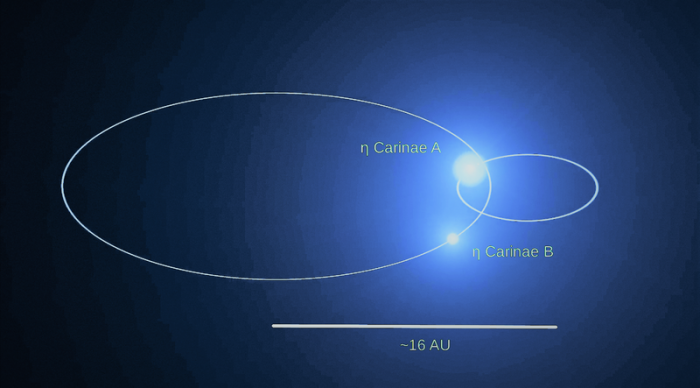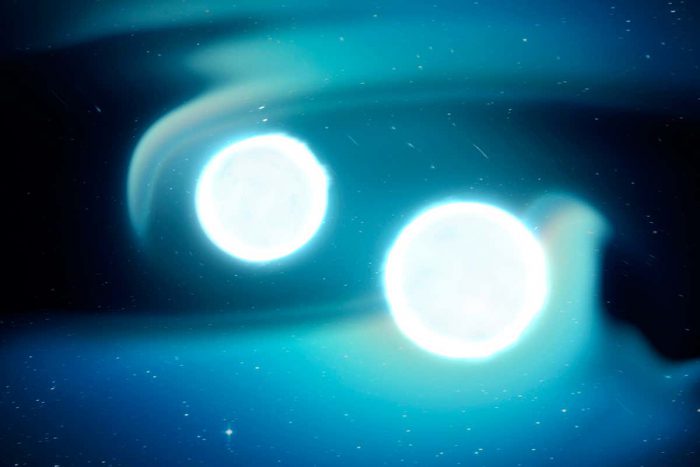A binary white dwarf system — that's hip science lingo for a pair of dead stars that orbit one another — is thrilling scientists with its blindingly fast rotation. These two stars (known together as J1539) spin around each other at a rate of once every 6.91 minutes. That is far faster than any known pair of white dwarves.
Watch a sped-up version (about 120x faster) of this cosmic ballet below...
So, that's neat, right? If you like, you can stop reading right here, maybe even share the video with a friend. But let's say you have some other questions. Such as, What is a white dwarf anyway? And what is this binary stuff?
Well, we're glad you asked!
Dying stars
Sirius B is the nearest white dwarf to Earth and is pictured here. But it's not the big, bright object. That's Sirius A. Sirius B is the tiny star to the bottom left. (Getty Embed)
At some point, all stars 'die'. This means that they run of fuel and fusion stops within them. And fusion...?
This is the constant internal reaction that gives a star its heat and brilliant light. It is what allows it to radiate energy across huge distances. Once fusion stops, these things all come to an end.
Larger stars explode as supernovas, and can even collapse into black holes. But stars the size of these two (about the size of our Sun), they briefly swell into enormous red giants, then burn out and collapses into themselves, creating you guessed it, white dwarf.
But though fusion has stopped, calling a white dwarf dead is a bit misleading.
Dead, but not done
A white dwarf still shines. And its surface is still very hot (maybe not live star hot, but thousands of times hotter than anything on Earth). And lastly, remember what we said about the star collapsing? When a star collapses, all of the stuff that its made of — its matter — none of it leaves the star. It just gets squeezed into a much smaller package.
Imagine if you squished your house into something the size of a house... cat. That kind of squishing. When something is compressed that much, it becomes incredibly dense. And this density increases gravity big time. As an example, one of the white dwarves in J1539 is about the size of Earth — but its surface gravity would be about 100,000 times stronger there.
In other words, if you stood on its surface, you would weigh about as much as thirty blue whales.
Dynamic duos

Another binary system, Eta Carinae. (NASA)
In the universe, everything is orbiting something. The Moon orbits Earth. Earth orbits the Sun. Binary systems are formed when two objects become caught in one another's gravity. They orbit each other.
We wrote last month about Eta Carinae, a binary star system caught inside an enormous nebula. And as the case of J1539 proves, even dead stars have more than enough gravity mojo to go binary.
In fact, according to calculations, the rate of J1539's rotation is increasing. In 130,000 years, that rotation should be down to around 5 minutes. And then what? Will they eventually collide with each other?
They might! Scientists believe we may see this binary white dwarf system smash together to form a whole new star. Whoa!
Not too bad for a pair of old dead stars, right?
 Meet ZTF J153932.16+502738.8... or just J1539 for short. (Got to work on those names!) (NASA/SPL)
Meet ZTF J153932.16+502738.8... or just J1539 for short. (Got to work on those names!) (NASA/SPL)










Too bad we won’t be around when that supersmash star is formed…
This is amazing, wow!